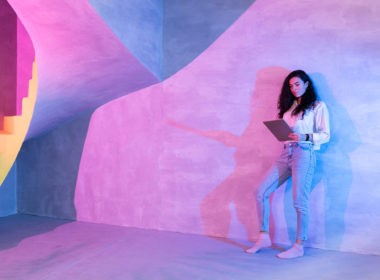Telemedicine and medical software enable healthcare professionals to deliver care remotely. But while they have some overlap, these two types of platforms are designed for different primary use cases. This article examines what distinguishes telemedicine software from general medical software, a distinction that also matters for organizations in behavioral health, including those supported by Prosperity Behavioral Health.
What is Telemedicine Software?
Telemedicine software platforms developed with the help of telemedicine app development services allow doctors, nurses, therapists and other care providers to interact with patients using telecommunications technology. This includes video conferencing, remote patient monitoring tools, and other solutions that enable remote care.
Some key telemedicine software features include:
Video visits
- HD video conferencing optimized for telehealth encounters
- Integrated peripheral devices like digital stethoscopes
- Virtual waiting rooms
Remote patient monitoring
- Collect vital signs, symptoms and other health data from patients at home
- Alerts for clinicians if readings fall outside set thresholds
Asynchronous communication
- Chat, SMS and email interactions between providers and patients
- Image and file sharing
- Prescription management
Clinical workflow support
- Telehealth-focused EHR systems and documentation
- ePrescribing
- Referral and care coordination tools
- Virtual front desk/administrative support
Security protections
- Encryption, access controls and audit logs
- HIPAA and HITRUST compliance
- Safeguards for video visits
This combination of telemedicine app features allows clinicians to replicate key aspects of in-person care delivery through technology. It facilitates remote consultations, follow-ups, chronic disease management and more.

What is Medical Software?
Medical software is a broad category that includes technology solutions for healthcare administration, clinical operations, medical research, data analytics and many other domains. From EHR systems to revenue cycle management platforms to genomic analysis tools, medical software aims to address a wide range of needs across the health sector.
Some examples of medical software applications include:
Electronic Health Records Software
EHR systems centralize patient information, providing healthcare professionals with easy access to comprehensive medical histories.These tools are designed to enhance care coordination, improve decision-making, and streamline clinical workflows, ensuring better patient outcomes.
- Centralized patient medical history and documentation
- Clinical decision support
- Prescription writing
- Referrals and care coordination
Medical Billing & Coding Software
- Automate insurance claims filing and processing
- Track accounts receivable and payments
- Optimize revenue cycle efficiency
Medical software covers a range of applications designed to streamline various healthcare processes, from patient management to insurance claims. One critical aspect involves ensuring precise billing and coding practices for different medical specialties. This includes cardiology billing guidelines, which are vital in verifying insurance coverage and documenting cardiology codes accurately. By using sophisticated billing technology, healthcare providers can minimize errors and optimize their revenue cycle.
Healthcare Analytics Software
Healthcare analytics software aggregates and processes data from various sources, such as EHR systems, insurance claims, and operational records, to reveal trends, identify inefficiencies, and suggest areas for improvement.
- Data aggregation from EHRs and other systems
- Statistical analysis and visualization
- Identify care improvements and cost savings
Medical Research Software
Medical research software supports every stage of the research process, from study design to data analysis. These platforms empower researchers to uncover new insights into diseases, design innovative treatments, and conduct clinical trials more efficiently.
- Tools for designing studies and clinical trials
- Collect and analyze results
- Model disease mechanisms
Unlike telemedicine software, these platforms don’t necessarily focus on enabling remote care delivery. Many support general healthcare operations, research and analytics rather than direct clinical services.
Distinguishing Features of Telemedicine vs. Medical Software
While there can be some overlap, the features of telemedicine and general medical software have some key differences:
Primary Use Case
Telemedicine software is specifically designed for virtual care services, including remote consultations, monitoring and ongoing care relationships at a distance. Other medical software has diverse healthcare use cases outside of direct telehealth interactions.
End Users
The primary users of telemedicine platforms are typically care providers and patients. Other medical software may be designed for healthcare administrators, researchers, analysts, and other roles that are not involved in direct clinical care.
Video & Peripheral Support
Extensive video visit capabilities optimized for telehealth encounters is a core component of telemedicine software that isn’t present in most other medical platforms. Many also integrate digitally-enabled medical devices.
Patient Engagement Tools
Since delivering care remotely relies heavily on patient engagement outside the clinic, most telemedicine solutions have robust capabilities for care reminders, data collection, communication and self-service booking/scheduling. Other medical software generally doesn’t focus as heavily on consumer-facing capabilities.
Security Requirements
Telemedicine platforms must adhere to stringent protections around personal health data sharing, video transmission and other areas unique to virtual care delivery across distances and technology channels—often more so than general medical software.
Telemedicine Software Capabilities
As software designed expressly for enabling care over distances, telemedicine platforms have a defined set of core tools that distinguish them from other medical technology solutions. Some of the most essential features include:
Video Visits
HD video chat optimized specifically for telehealth is the cornerstone of most telemedicine software platforms. Beyond video streaming, these tools support remote exams, specialist consultations, and other critical encounters.
- High-resolution, lag-free video
- Integrations with Bluetooth peripherals like digital stethoscopes to capture and share readings
- Screen sharing to review documents, images or tests together
- Annotation tools to diagram areas of concern on camera
- Virtual waiting rooms and automated notifications when the provider is ready
Remote Patient Monitoring
RPM tools allow care teams to track critical health data from patients at home following their discharge from hospitals or clinics:
- Patients record vital signs, symptoms, medication adherence and other metrics using connected devices
- Data transmits seamlessly to the software platform
- Rules-based alerts notify clinicians of any concerning readings
- Ongoing visibility helps identify early signs of complications
Asynchronous Communication
Sometimes real-time video isn’t needed—asynchronous options allow patients and doctors to exchange non-urgent information securely:
- Secure messaging for asking basic questions and sharing updates
- Photo sharing, so patients can provide images of conditions for review
- File sharing for transmitting documents or forms
- Prescription management, including requests, renewals and tracking
Clinical Workflow Support
Streamlining the provider experience is crucial for telemedicine adoption. Key support tools include:
- Telehealth-focused electronic medical record systems, documentation templates and note-taking
- ePrescribing and prescription tracking
- Referrals and care coordination with other providers
- Virtual front desk and administrative tools for telehealth operations
Security
Data protection is paramount. Robust solutions ensure:
- Encryption of all video streams and health data
- Role-based access controls and robust permission settings
- Comprehensive audit logs showing access attempts and system changes
- Integrations with patient authentication tools like single sign-on
- HIPAA and HITRUST security standards attestations
Use Cases and Benefits of Telemedicine Software
Some examples of how healthcare organizations can leverage telemedicine features include:
Virtual Urgent Care
24/7 on-demand remote consultations for low-acuity conditions allow patients to connect with providers after hours conveniently.
Specialist eConsults
Patients in rural areas get access to leading specialists for diagnosis and treatment planning without requiring long-distance travel.
Chronic Care Management
Remote monitoring, video check-ins and data sharing support ongoing care for diabetes, heart disease and other chronic illnesses.
Post-Discharge Monitoring
Recently, hospitalized patients have used RPM devices to capture vitals and symptoms so that care teams can watch for early signs of complications.
Behavioral Health Counseling
Providers conduct therapy and psychiatry sessions over video, increasing access to mental health services.
The benefits of implementing telemedicine software include:
- Convenient access to care for patients
- Increased capacity and efficiency for health systems
- Reduced hospital readmission rates
- Expanded reach beyond physical facilities
- Higher patient engagement in health management
Conclusion
While telehealth features and general medical software share some high-level goals around advancing healthcare through technology, they serve fairly distinct purposes. Telemedicine platforms offer a specialized set of tools, including video, data sharing, and monitoring, designed specifically for virtual care. These facilitate remote consultations, follow-ups, emergency triage and other critical services that general healthcare administration or research applications aren’t equipped to provide.
With the rapid adoption of telehealth in recent years, easy-to-use, full-featured telemedicine software is becoming increasingly vital for health systems looking to improve access, enhance care delivery and operate efficiently across both physical and digital care settings.












